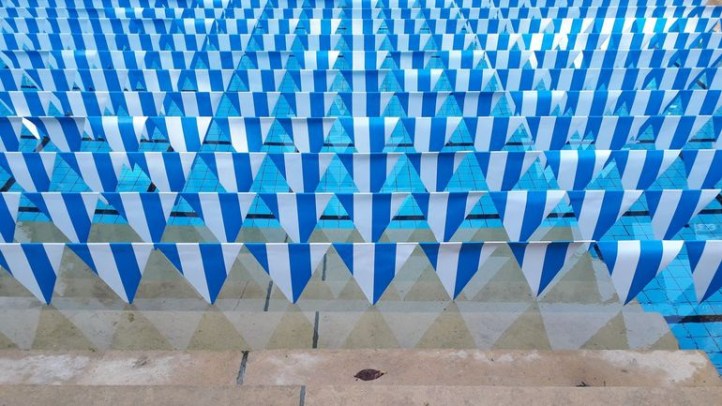With Flags, the Boghossian Foundation explores the question of territory, multiple identities and intercultural dialogue. Flags hold a constant place in art, from classical historical painting to contemporary installations.
With the juxtaposition of their strips of coloured fabrics, flags have stimulated painters with their qualities for abstraction, well before abstract art preferred chromatic fields to the representation of reality. Tricolour or monochrome, each colour or combination of colours immediately evokes references that we find repeatedly in artistic creation.
Their political and symbolic resonance has been the primary pretext for including flags in works of art. A flag can serve to represent a nation, to celebrate a victory or the conquest of a territory, but also to symbolize and defend a cause. Liberty leading the people or the flagged streets dear to Impressionist and Fauvist painters are outstanding examples, as are the more contemporary works of Gérard Fromanger and Mounir Fatmi.
A flag can give contradictory messages: it can evoke implicit criticism of dominating regimes or dictatorships, but it can also exalt the adhesion of a nation to its identity, for example in reaction to an act of terrorism, as we saw following the attacks aimed at Charlie Hebdo. Or again with the frequent use of the American flag in iconography.
A flag being a sacred object, the voluntary destruction of a country’s flag is seen as a highly subversive act punishable by law, while the pattern of its colours is recorded in national constitutions. But a flag is also an object, a frontal icon for Jasper Johns, a module for filling space in Daniel Buren’s installations, an image with multiple meanings for Marcel Broodthaers, etc. It is these and many other uses of flags in modern and contemporary art that this exhibition seeks to bring together in a transnational course of exchanges and confrontations.
